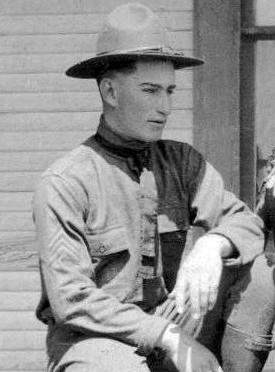During lunch hour one day in June of 1987, Dana Sawyer, R. E. “Bubba” Broussard, and I, went “shopping” at Sporting Goods, Inc., which in 1987, was the best hunting and fishing store in the area. During this specific trip, I bought a new fishing rod for $19.95
The reader has met Dana before in “The Sunken Shrimp Boat”. Bubba was a computer contractor and was the first customer I had met with when I returned to Houston in 1979. Layla was the second. On my first meeting with him, I happened to have a picture of the twelve-pound bass I caught in March of that year, which I promptly showed him. He responded by pulling out a picture of a six hundred pound Blue Marlin he had just caught. Our friendship was sealed and lasts till this day.
The rod in question was inexpensive. So inexpensive that it didn’t even have a name. But, its shaft extended all the way through to the end of the handle, it had a strong reel seat and trigger grip made of chromed steel, had a good reverse bend to it, had stainless steel eyes and it felt good to hold. It was six and a half foot long, with a medium to heavy action and I knew it would be just the right fit for my Ambassadeur 6500C, wide spool, reel, loaded with twenty-pound line. History would show that I had made a good buy.
I got to try the new rod out the next week, when Layla and I and Bubba and his wife went to Grand Isle, Louisiana, attempting to catch a Stripped Marlin. We caught everything but a Marlin. A hundred miles, yes a hundred miles out in a twenty-three foot, Formula with two, 455 cubic inch, engines and MercCruiser out-drives. A fifty-five MPH boat. We did have company, Jay Prudhome and his wife in Jay’s new twenty-seven foot Proline, with two, two hundred horsepower sea drives. The seas were calm with no wind. We went fast!
After a less than three hour run, one hundred miles out, we pulled up to acres of floating Sargassum sea weed and with my first cast with my new rod, I had a strike from a Chicken Dolphin (small Dolphin weighing less than five pounds) and the fun started. We boated over one hundred that morning. The new rod was fine. I filleted all of those fish before supper that night. During our fishing we lost many fish to sharks! They were a nuisance.
Around noon, I had a big hit and immediately knew it wasn’t a small dolphin. The fish was a great match for my new rod making a long run, it was too far offshore for a Kingfish, maybe a Wahoo, maybe a “bull” Dolphin, but no jumps, getting it alongside the boat we saw it was a eight to ten pound Albacore Tuna being followed by a large, six foot, Bull Shark. Bubba grabbed for his .357 Magnum as the shark clipped off the Tuna’s body right behind the head. The shark happily lolled on the surface long enough for Bubba to shoot it right in the middle of its head and, the last we saw of it, it was sinking. Revenge!
We slept in the next morning, and around 10:00 AM we headed out to some rigs to try and catch some really big Red Fish, thirty pounds and up. We randomly picked a rig, tied up to it, baited up and my new rod was bent double by a savage strike and a long, head shaking run “a big, big” Red! Fifteen minutes later we netted a thirty-five pound Red. He worked me, and my new rod out, but back into the water for him.
Not ten minutes later another savage strike, these fish mean business, and, after what seems like two hours, we boat and release a forty pound Red. My new rod did just fine. Mid morning in the middle of July, no breeze and the fish have really worked me and my new rod out, and, splash, cold, cold, splash, my lovely wife and my best friend have unceremoniously dumped an Igloo water cooler full of ice and cold, cold, water on my head to cool me off.
Layla now laughs about this, saying, “This is the only time I ever saw you loose your temper.” Which I did. Being a lady, Layla doesn’t approve of swearing, anyway I copied a page out of my Dad’s cussing book and the “Blue Streakers” started, and me trying to choke them both at once, and both of them laughing so hard, my temper cooled. They have never tried that again. Meeting Jay and his wife, we headed back out, one hundred miles, to our weed patch.
Fishing around our weed patch, we catch more chicken Dolphin and loose some fish to the sharks. We have a nice Dolphin on and up come a big Bull Shark and eats the Dolphin, lolls on the surface and we see the hole in its head where Bubba shot him yesterday. Incredible, the same shark and not dead! I guess he missed any vitals, if any happened to be up there.



